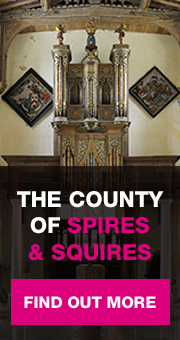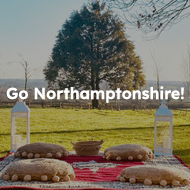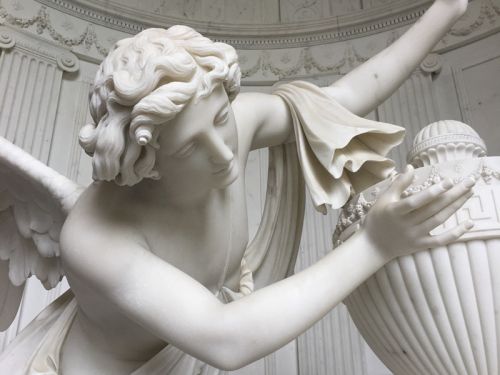7th September 2017
Visiting one of our Northamptonshire churches, I was unexpectedly dazzled by a chancel full of ethereal light reflecting off pure white Carrera marble. Melancholy sculpted figures full of life, but frozen in attitudes of mourning.
Four world class works of art hidden away inside St Edmund’s Church, Warkton; these are the Montagu Monuments.
Sir Edward Montagu was a good friend of Henry VIII, and in 1541 was no doubt delighted to receive from him the manor of Warkton. Edward had already bought the adjoining estate of Boughton, and had begun developing a home which eventually became the grand Boughton House.
Edward’s son, Ralph, 1st Duke of Montagu, chose the church at Warkton to house the family mausoleum, adding it to the north side of the chancel. During the 18th century the family enriched the church, including rebuilding a new chancel with a huge East window, ready to house and illuminate the Montagu funerary monuments.
The 2nd Duke and Duchess of Montagu, John and Mary, married very young as a political alliance, but soon became a devoted couple. John was a man of contrasting passions, fascinated by the technicalities of war, the education of black people in England and benefactor to the London Foundling Hospital. Endearingly devoted to his pets, he hospitalised his farm animals and rescued a toothless old lion. On his death, Mary the Duchess commissioned a memorial recognising his interests, showing the personification of Charity, life sized military equipment, grieving children, and his wife looking on.
Mary herself died before this memorial was completed, and her daughter Mary added her mother’s monument to French sculptor Louis-François Roubiliac's commission. Mary’s monument sits opposite her husband’s, showing the three fates, destiny, life and death. They are depicted as beautiful young women, one holding a skull with another resting her feet upon it.
Daughter Mary had married the ‘boy next door’, George Brudenell of Deene Park, and on her death he commissioned (my favourite) of the four monuments, created by Dutch sculptor van Gelder. It is most lifelike, depicting a dramatic scene with grieving women, small children, and an angel of transcendent beauty alighting from heaven to reassure the bereaved.
The final monument is that of the only surviving child of Mary and George, Elizabeth, Duchess of Buccleuch and Queensberry. In her lifetime she was a great benefactress, especially supporting those with physical disabilities. She collected art and beautiful things, loved music, the ballet and to travel, and at the same time fitted in the raising of six children. Her monument depicts her as a dignified Roman matron, accompanied by the god of death wearing a wreath of poppy heads signifying eternal sleep.
By the 21st Century the monuments were suffering the usual ravages of time. The marble was dirty, damaged and at risk. The Parochial Church Council and the Buccleuch Living Heritage Trust raised funds for restoration, and by 2015 the project was completed, resulting in robust and gleaming monuments.
Today a great team of volunteers offer a warm welcome and share stories and interpretations of the symbolism. The church is free to enter (donations always welcome!) and a visit is well worth the time. It is breathtaking to see how sculptors create such vital and ravishingly beautiful objects from inert stone.
For more information, please visit www.boughtonhouse.co.uk/montagu-monuments
Your login details have been used by another user or machine. Login details can only be used once at any one time so you have therefore automatically been logged out. Please contact your sites administrator if you believe this other user or machine has unauthorised access.








